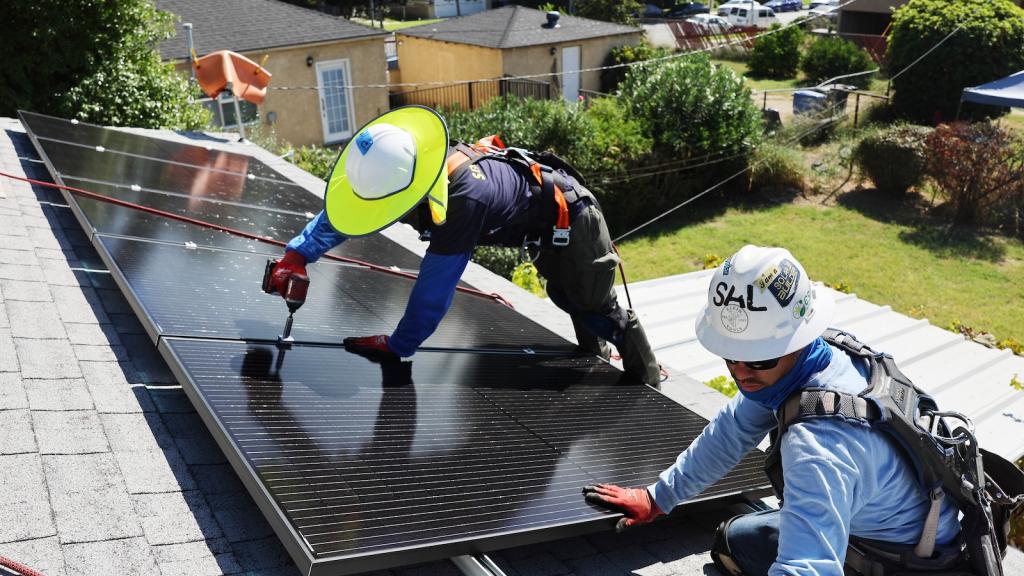Time to shatter some common myths about energy efficiency.Photo: Sergio AlvarezThis post was written by Sara Hayes, senior researcher at the American Council for an Energy-Efficient Economy and a contributing author at the ACEEE blog.
Energy efficiency can be difficult to conceptualize — there’s not a representative device like a solar panel or wind turbine. Rather, it’s a collection of technologies, strategies, and policies involving our houses, businesses, transportation, and behavior that improve the way we live. There are often misunderstandings or “myths” about how we verify that energy efficiency is working and measure what benefits it’s providing. Four measurement and verification (M&V) myths are debunked below.
Myth 1: Energy efficiency is an idea, a call to action, not a tangible thing. There is no reliable standard for measuring or verifying energy savings resulting from efficiency measures.
The lack of a national standard for M&V of efficiency-driven energy savings has left states to develop their own protocols. These efforts have resulted in a well-developed and rich source of experience and information that can inform the development of a national standard. Currently more than half of all U.S. states have efficiency targets and are measuring their progress towards achieving those goals. In addition to states, utilities have been demonstrating energy savings resulting from efficiency measures for decades. In many cases, a utility’s authority to collect revenues is based on its ability to verify, with substantial certainty, the amount of savings that occurred. This has caused utilities to invest significant resources into solid M&V methods that stand up to the scrutiny of regulators and ratepayer advocates.
Myth 2: Lots of factors affect energy use, making it impossible to tell when a change in energy consumption is due to efficiency improvements or other factors.
There is an entire profession of highly experienced energy program evaluators that has developed over the last 30 years, and they utilize evaluation methodologies that have repeatedly been accepted in utility regulatory proceedings across the nation. When an old, inefficient piece of equipment (e.g., a furnace, motor, refrigerator, etc.) is replaced with a new, high-efficiency model, the energy savings that result can be measured quite reliably. While other factors (e.g., the weather, economic activity) may affect total energy use, statistical methods have been developed to separate out these effects. The evaluation methodologies that have been developed can measure and verify the energy savings from energy efficiency measures and programs with a great deal of confidence.
Myth 3: I can’t rely on efficiency to meet energy demands because I can’t call on it when I need it, and I don’t know how much I’m going to get when I do.
Efficiency is not a “demand response” approach or a peaking resource that is “called upon” when demand is high. Rather, it is a “baseload” resource that, once put into practice, continues to produce energy savings at all times the device is in operation. The lifetime of an efficiency resource will depend on the type of measure that is installed (e.g., CFL bulbs, a new air conditioner, adding insulation to a building, etc.), and energy savings can reliably last anywhere from three to 20 years or more. Furthermore, while many clean energy sources rely on external conditions that cannot be controlled, efficiency measures produce energy savings year-round regardless of the weather.
Myth 4: Potential benefits from energy efficiency are small and aren’t worth measuring.
Energy efficiency is our nation’s greatest energy resource. Energy savings from efficiency are real and save Americans money. Since 1970, efficiency improvements have reduced U.S. energy costs by about $700 billion [PDF] from what they would have otherwise been in 2005 alone. Those dollars are reinvested in the economy to support businesses and create jobs. Available cost-effective energy savings from all sectors is predicted to range from 16 to 30 percent of current consumption by 2025 (see here for more information).



